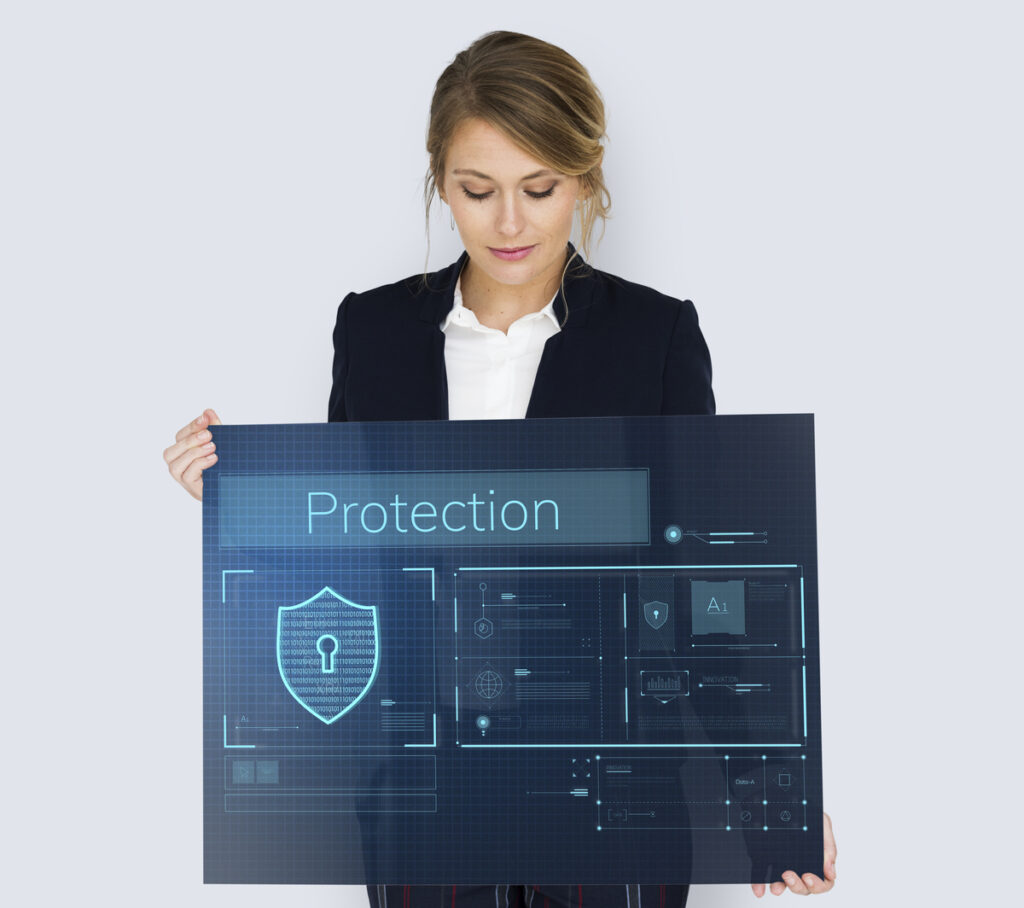Exclusive Neuroject Article: All industries have seen a significant change toward a greater reliance on digital technology after the global coronavirus epidemic started in 2020. The construction industry is one of the sectors that is experiencing a digital revolution.
Automation and advances in AI technology enable construction organizations to communicate with suppliers and clients globally and operate more productively. On building sites, digital technologies can even guarantee that projects stay within budget. But there can be more difficulties as a result of this increasing digitization.
There may be more weak points in the digital networks as the building industry becomes more dependent on digital technology. Cybercriminals can take advantage of this cybersecurity in construction vulnerabilities by using emerging technologies to launch attacks before adequate security measures are put in place.
The industry’s vulnerability can be attributed to multiple factors. First off, unlike sectors like healthcare and banking, the construction industry has not yet been subject to stringent data privacy and security laws. The industry has not been compelled to address its vulnerabilities in the absence of more regulation.
Even while practically all construction companies now operate entirely on technology, many still use antiquated computers and operating systems with insufficient firewalls and security measures to fend off skilled hackers. Moreover, the intricate digital and communication networks that are frequently present in the construction industry span numerous offices, working sites, and persons, creating a maze of entryways that can allow malicious actors to get access to the entire system.

Table of Contents
Why Cybersecurity Risk is Growing in Construction?
“Construction companies are getting hacked way more often than you’re hearing about,”
says Russ Young
The reasons are numerous, and well-known in the hacker/cyber-criminal world. For instance:
- It is common for construction enterprises to lack proper firewalls or cyber-attack defenses. Consumer-grade computer systems and software sometimes come with anti-virus software; however, this is insufficient to stop determined hackers.
- Multiple digital systems, software, and communications devices dispersed over multiple job sites and offices are necessary for modern construction. Young uses the comparison of a house with one external door and a house with twelve doors to describe this predicament. Which home is more susceptible to break-ins? It’s possible that neither company leaders nor IT personnel are aware of every gadget utilized by the workers or that they have all been authorized, tested, and integrated under a single security system. A cybercriminal can have complete control of the property once they enter through one of these twelve entrances.
- Executives in construction companies frequently believe their data is not very valuable or significant. “However, you value it,” Young responds. To recover the data if it is abruptly lost, what price would you be ready to pay? likely quite a bit.
- work from home. It is common for managers, estimators, and supervisors to bring their laptops home after work or while traveling for remote work or trade exhibits. This issue has been made worse by the work-from-home habit brought on by Covid. Potential security threats include things like Wi-Fi at hotels or conferences, several cell phone carriers, or even just your kids using your laptop at home.
- The same is true for suppliers and subcontractors. They might be a backdoor source for hackers to use if they have access to your systems.
- Additional hazards include outdated computers, operating systems, and virus protection. Microsoft and Apple eventually stopped providing security fixes for their older operating systems. Cybercriminals search the internet for these weaknesses to commit crimes. As soon as one of these outdated PCs is connected to the internet, it is quickly discovered and hacked, frequently by several hackers so cybersecurity in construction is crucial.
What Managers Need to Know about Cybersecurity in Construction
Cybersecurity in construction is becoming a bigger problem for us. For many businesses, identifying and fixing cyber risk vulnerabilities has proven to be difficult. Contractors hold a tone of sensitive data that is of interest to cybercriminals, as many are aware. Information about employees and intellectual property are examples of this type of data.
Being aware of and comprehending the threats may help contractors better grasp how to spot weaknesses, stop assaults before they happen, and, if they do, enhance recovery operations after a cyberattack.
Cyber threats have come to light as a result of multiple high-profile data breaches in recent years. The level of sophistication exhibited by these successful hacks against major tech companies has become evident.

The Role of Cybersecurity in Construction
Cybersecurity in construction refers to a variety of techniques used to guard against unauthorized use, access, or breach of digital assets and information systems. It entails putting preventative measures and protections in place to lessen possible risks and efficiently address cyber threats. Cybersecurity in construction is concerned with protecting data’s availability, confidentiality, and integrity as well as making sure information systems are dependable and functional.
The establishment of robust access controls is one of the most important components of cybersecurity in construction. To stop unauthorized people from accessing sensitive data, this involves implementing secure user authentication mechanisms, encryption, and multi-factor authentication. By putting these safeguards in place, construction organizations can lower the risk of insider threats and data breaches by limiting access to vital information to only authorized workers.
The routine monitoring and updating of software and systems is a crucial component of cybersecurity in construction. It is recommended that construction organizations apply software patches and updates regularly to mitigate existing vulnerabilities and safeguard against emerging risks. Furthermore, putting intrusion detection and prevention solutions in place can assist in spotting and thwarting any illegal attempts to access the network or systems of the business.
Potential Cyber Threats in the Construction Industry
The three main cybersecurity in construction that companies must deal with are fraudulent wire transfers, ransomware, and data theft. Every risk is covered one at a time.
Ransomware
The most popular way for ransomware to infiltrate an operating system is through phishing emails, which try to trick the recipient into downloading malicious software. Some phishing emails are obvious because of their strange instructions and poor English, but others are more subdued and simpler to fall for. Phishing emails are frequently sent by cybercriminals using email addresses that initially seem trustworthy and familiar.
Often, all it takes to fool someone is an authentic email with clear directions to click on a link and download new project documents or information. After it has been downloaded, ransomware gives hackers the ability to either steal data or prevent a company from using any of its operational systems, including payroll, until a hefty ransom is paid.
Lack of access to email and operating systems not only seriously disrupts corporate operations, but also frequently results in the theft of sensitive, private data belonging to the company, its workers, and its suppliers. Apart from the potential damage to the company’s reputation, there may be significant liability issues if the affected vendors and customers also suffer losses. Ransomware is growing more and more common because it is profitable.
Often, paying the ransom is the only way for a business to get back access to its data and systems and get back to business. Regretfully, there is no guarantee that the business will receive all of the data that was taken, even if it pays the ransom. There has been a noticeable rise in the proportion of situations when paying the ransom does not lead to data recovery.
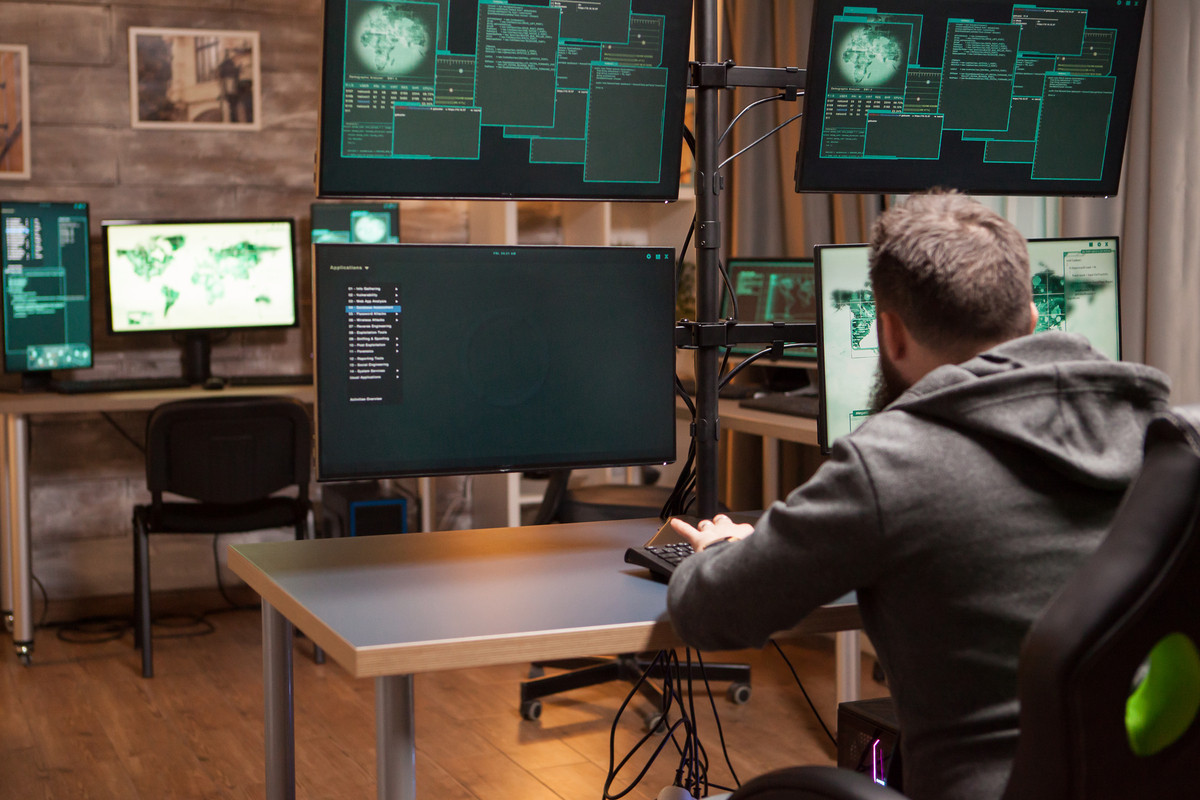
Data Theft
Data theft is a severe problem, regardless of how it was obtained—through ransomware or other hacking techniques. The dark web has a sizable market for sensitive personal data, such as credit card numbers and social security numbers, that pertains to clients, suppliers, and workers. There might be major potential legal consequences and reputational harm risks if a corporation does not have proper measures in place to protect the sensitive information that has been entrusted to them.
Furthermore, several construction companies handle private and sensitive intellectual property, including designs, patents, bid documents, and blueprints. Expert hackers know how valuable this information is, and they will stop at nothing to extract as much money as possible from their victims.
Fraudulent Wire Transfers
Construction companies are vulnerable to wire fraud since they depend more and more on internet banking and wire payments. After gaining access to a company’s email and operating systems through a backdoor, a hacker may create fictitious email accounts that appear to be those of the workers, banks, clients, and vendors that the construction company frequently works with.
Hackers can identify the important participants in financial transactions, and they frequently use this knowledge to trick someone into letting down their defenses. The hacker may provide updated wiring instructions to the corporate employee in charge of starting the wire transfer if they anticipate a significant wire transfer.
There is frequently very little that can be done to retrieve the funds once the transfer is complete if the person is duped and transfers the money into the new account.
Proactive Steps to Boost Cybersecurity in Construction
Fortunately, cybersecurity companies are constantly improving cybersecurity in construction systems and procedures that are accessible for use by businesses, coinciding with the advancement of hackers’ ever-more-advanced hacking techniques. Here are a few strategies to defend your construction company from online threats.
Secure Supply Chain Management
Working with suppliers and subcontractors may provide cybersecurity in construction concerns, which can be reduced by exercising forethought. Make sure the contract expressly states what is expected of you in terms of safe cybersecurity activities. When working with any third-party provider, emphasize that cybersecurity in construction is of utmost importance by relying on the legally binding character of the contract.
Implement Zero Trust Security
Systems known as zero trust security make sure that anytime employees wish to access private company data, every login attempt and user device are verified. Until proven differently, zero-trust security protocols consider every attempt to enter the system to be a potential threat. Zero trust security can be a good general policy that covers widely distributed points of entry for a construction company with a large workforce that logs in from multiple locations. To prevent malicious actors from decrypting the data kept there, zero trust security additionally adds an extra layer of data encryption.
Choose the Right Software
Selecting the appropriate software can assist in strengthening security from within, but adding strong cybersecurity in construction measures to protect all devices and users is essential. Project management software should have the most recent security updates and be recommended to both employees and vendors.
This includes software that interacts with customers; customer relationship management software is the most popular kind. Seek CRM solutions with essential features like complete AI integration and automation powered by AI so that all of your software products are safeguarded by the same cybersecurity in construction protocols.

Follow Government Standard Security Regulations
Ensuring your business complies with government-mandated requirements of cybersecurity in construction is one approach to guarantee that your cybersecurity in construction plan meets standards. A certified third party should be brought in to carry out risk assessments and security evaluations. This is a clever preventive strategy that enables your business to find vulnerabilities and develop fixes before a cyberattack.
Create an Incident Response Plan
Your building company needs to be ready to handle the damages if a breach happens. Provide a clear incident response plan so that staff members are aware of their responsibilities, how they fit into the overall corporate damage control strategy, and to whom they should report any issues.
To make sure your business and its policies are clear, test your incident response procedures regularly. In the unlikely event that a breach does occur, you want to be ready as much as possible. Frequent testing makes it clear which components of the incident response plan will function as intended and where clarification is required.
Purchase Cyber Insurance
An excellent backup plan for additional security in the event of a cyberattack is cyber insurance. The majority of cyber insurance coverage will cover the costs of forensic investigation procedures and breach notification.
It can be a good idea for businesses to purchase cyber insurance as an extra layer of protection in case of a successful cyberattack or data breach because other types of insurance, like director’s and officer’s liability insurance and professional indemnity insurance, will probably exclude cyberattacks from their policies.
Conduct Companywide Training for Cybersecurity in Construction
A significant amount of violations concerning cybersecurity in construction are the result of human error. The fundamentals of preventing cyberattacks should be carefully taught to all employees, subcontractors, and temporary workers. Knowing the potential risks and how to spot typical employee-targeting cyberattack techniques like malware and phishing emails can offer a crucial extra layer of security.
By providing personnel with procedures of cybersecurity in construction training, mistakes that could have serious consequences can be avoided. These mistakes include not installing software updates on time, making strong passwords, using multi-factor authentication on all devices, and encrypting sensitive data. All staff members should be aware of IT policies so that they can report any questionable behavior, communications, or login attempts to the appropriate coworker.
How to Maintain and Update Your Cybersecurity in Construction
Cybersecurity in construction is a continuous process rather than a one-time event. To make sure your security measures are current and efficient, regular maintenance is essential.
There is no room for complacency when it comes to cybersecurity in construction. Protecting your construction company from potential breaches requires being proactive and alert as technology advances and cyber threats become more complex.
Regular audits are an essential part of keeping a strong posture of cybersecurity in construction. Through these audits, you may assess your current defenses, spot possible gaps, and stay abreast of emerging threats. You can mimic a cyberattack and find flaws that require attention by conducting penetration testing. This proactive strategy enables you to take corrective actions before they are exploited.
Furthermore, it’s critical to keep up with the most recent developments in cybersecurity in construction. Because cyber dangers are always changing, it’s important to stay up to date on new threats and industry best practices. Gaining knowledge and insights can be obtained by following respectable cybersecurity blogs, going to pertinent conferences or webinars, and interacting with professionals in the field. You may strengthen your cybersecurity protocols and successfully safeguard your construction company by keeping up with emerging technology and trends.
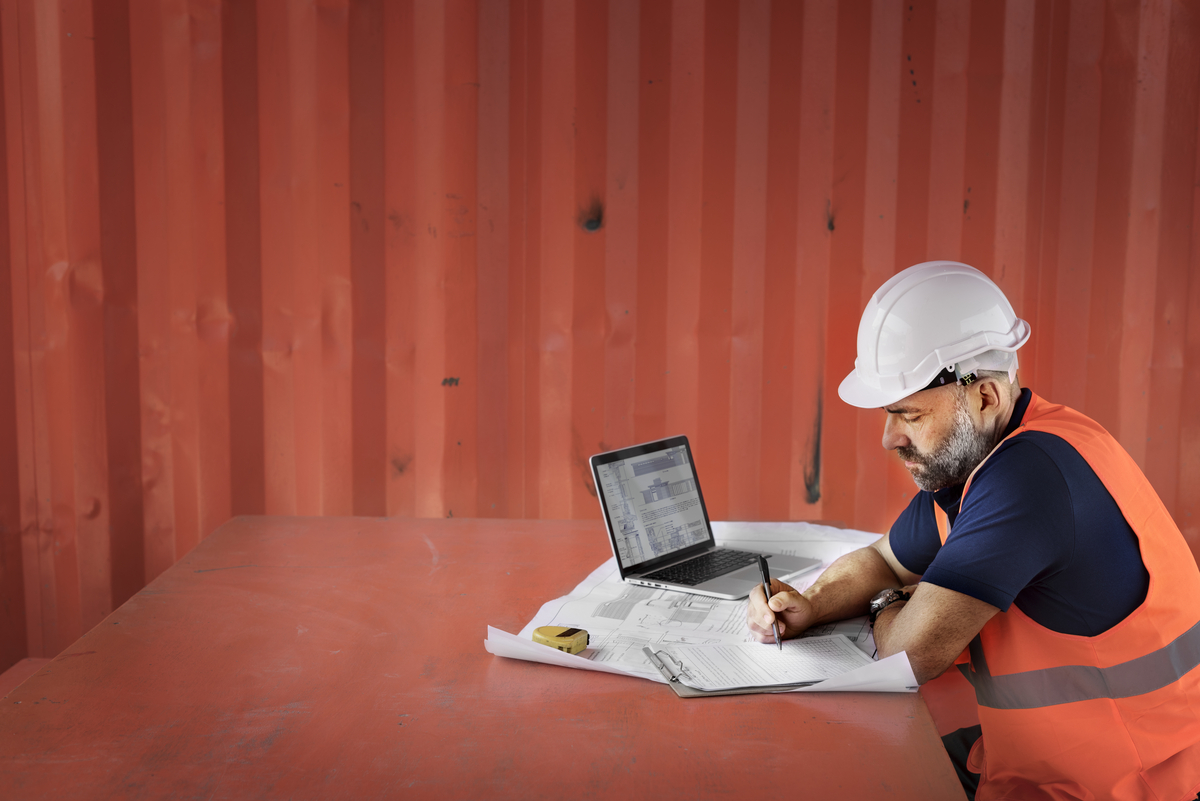
It’s also critical to develop an awareness about cybersecurity in construction within your company. Your employees’ chances of a successful cyberattack might be considerably decreased by training them on potential dangers and best practices. Organize frequent training sessions, provide educational resources, and exhort staff members to report any questionable activity. An effective line of defense against online attacks can be established by encouraging a sense of accountability and responsibility.
Putting in place a strong incident response plan is also crucial. Even with your greatest precautions, a breach could still occur. A clear plan in place enables you to react quickly and efficiently to lessen the effects of a cyberattack. To make sure your incident response strategy is effective in handling different scenarios, test and update it frequently.
What is the Role of AI in Cybersecurity?
Using artificial intelligence (AI) for Cybersecurity in construction is becoming a more practical means of defending the construction sector against online attacks. AI-driven systems outperform traditional security measures in the speed at which they can identify, evaluate, and counter possible threats. Furthermore, organizations can detect vulnerabilities before they worsen because of their predictive analytics capabilities.
Businesses must be more vigilant in safeguarding their IT infrastructure against malevolent actors who might take advantage of vulnerabilities as more systems become automated. This is made possible by AI, which uses complex algorithms to simultaneously monitor suspicious activity on several networks. Additionally, it makes it possible to detect sophisticated persistent threats at higher rates than would otherwise be possible because of a lack of manpower or a poor grasp of current risks and trends.
Furthermore, AI lowers the risk of breaches brought on by out-of-date software versions or settings by making it simpler to install patches and upgrades quickly and effectively while maintaining compliance with relevant legislation. The following are some main advantages of using AI in cybersecurity:
- Increased Efficiency: Automating mundane tasks allows personnel to focus on maintaining data integrity rather than monitoring logs.
- Reduced Costs: By leveraging machine learning technology, businesses can reduce operational expenses associated with manual labor, such as hiring additional staff for incident response teams.
- Improved Visibility: With real-time threat intelligence analysis available at any time, organizations are better aware of their system’s vulnerability landscape.
Aside from these benefits, integrating AI into cybersecurity in construction plans comes with several drawbacks that should be considered before deciding how best to use it. These problems include data gathering privacy issues and algorithmic bias brought on by inadequate training datasets, which can produce erroneous predictions or outcomes. In the end, organizations need to assess these possible disadvantages against the enhanced security provided by AI applications to decide if investing in them would result in more robust defenses against cyberattacks.
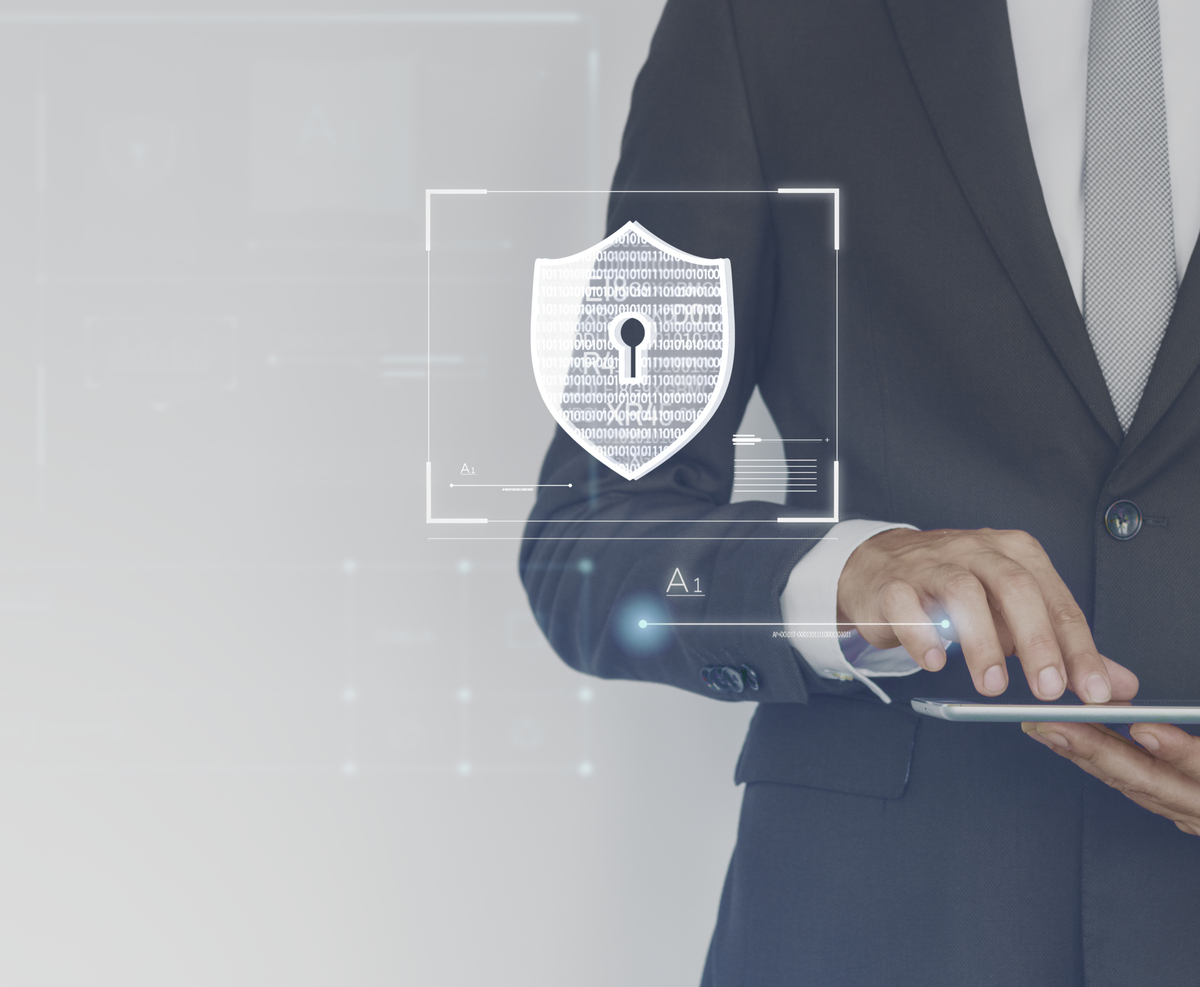
Top 5 Cybersecurity Companies
From design to operations, businesses should invest in cybersecurity in construction protections because attacks can happen at any point in a building project. Managed security services in particular are essential for ensuring consistent and flexible measures. As a crucial component of risk management, excellent ESG credentials also include good cybersecurity in construction. Chief Information Security Officers (CISOs) should sit on company boards, and cybersecurity should be viewed on an equal basis with physical security by construction companies. Additionally, this will assist businesses in navigating heightened regulatory scrutiny.
- Best for comprehensive security solutions
- Headquarters: Santa Clara, California
- Founded: 2005
- Annual Revenue: $6.9 billion
Palo Alto Networks, a leader in Next-Generation Firewalls and a major player in the services of cybersecurity in the construction industry, tops our list of the best cybersecurity in construction. They are the industry leader in AI cybersecurity, providing a cutting-edge platform that protects your network from a wide range of outside threats. With superior goods like:
- Prisma Cloud
- Cortex
- Strata
- Prisma SASE, Palo Alto Networks is a one-stop solution for multiple enterprise security needs, from Zero Trust to Cloud Native Security and Threat Intelligence.
Palo Alto Networks is firmly established as one of the leading cybersecurity in construction firms because of its continuous high scores in independent security testing. Their VM-Series virtualized firewalls and hardware firewalls are particularly notable for their control and visibility over users, content, and applications.
- Best for Antivirus, Network, and Identity Protection
- Headquarters: San Jose, California
- Founded: 1987
With a broad selection of antivirus and security products, McAfee is a well-known brand in the cybersecurity space. The San Jose, California-based company was founded in 1987 and is focused on antiviral management, network security, and identity protection. It meets the needs of both individuals and businesses with solutions like McAfee Mobile Security and McAfee Total Protection. McAfee is the go-to option for reliable, real-time protection because of its team of over 200 threat researchers, who stop 22,250 online threats every minute.
- Best for Comprehensive Threat Intelligence, Windows-Centric Environments
- Headquarters: Redmond, Washington
- Founded: 1975
- Annual Revenue: $211.91 B
- Cybersecurity Product Categories: Threat Detection, Risk Management, Compliance
Microsoft has improved its products for cybersecurity in construction dramatically after acquiring RiskIQ strategically. Threat Intelligence tools are now integrated into the Microsoft Defender platform, giving enterprises a thorough and detailed understanding of the current threat landscapes. Businesses can swiftly recognize such dangers and take appropriate action to eradicate them thanks to this integration.
- Best for Endpoint Protection, Threat Intelligence
- Headquarters: Sunnyvale, California
- Founded: 2011
- Annual Revenue: $2.241B
With an incredible growth trajectory, CrowdStrike is a threat intelligence and endpoint security game-changer. This cybersecurity in construction, well-known for its Falcon platform, is excellent at several different services, such as ransomware blocking, incident response, and next-generation antivirus. In addition to standing out in the cutthroat EDR business, CrowdStrike is also leading the rapidly expanding MDR and XDR industries.
The company’s competence was prominently displayed when it warded off an attack connected to SolarWinds, securing high ratings in MITRE MSSP assessments. CrowdStrike is marketed as a holistic solution for today’s complicated cybersecurity in construction needs because of its broad range of applications, which include retail, healthcare, finance, and election security.
- Best for managed detection and response security
- Headquarters: Fully Remote
- Founded: 2019
- Cybersecurity product categories: Firewall security, endpoint security, threat detection, risk management, cloud security
With a full range of services for cybersecurity in construction intended to protect sensitive data, Deepwatch is a significant participant in the cybersecurity space. Deepwatch is a cyber threat response company that specializes in vulnerability identification and threat monitoring. Their client-focused strategy, which matches each firm with a committed team of cybersecurity specialists to ensure smooth and efficient security operations, is what distinguishes them.
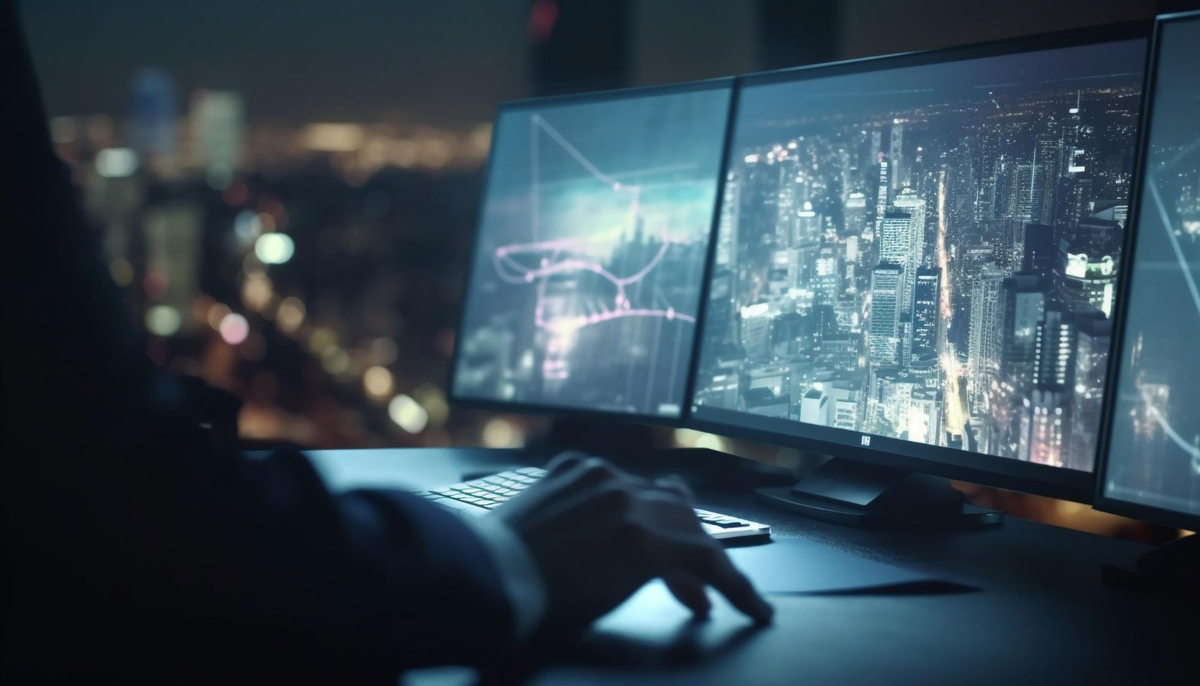
Cybersecurity Checklist for Contractors
Cybercriminals can be deterred by using multi-factor authentication, strong passwords, and usernames. What actions can contractors take, then, to make the most of their cybersecurity in construction? Here are a few keys to consider:
- Deploy Multifactor Authentication: Multifactor authentication makes it far more difficult for hackers to access your systems, and the likelihood is that most of them will move on to the next target once you can implement it where additional stages or devices are required when signing in from new devices. Since you can forget about issues like server banks, cloud services provide a lot of potential advantages for businesses. Your computer today plays a little role in the overall cybersecurity in construction, but behavior also matters: the password you select, for example, or whether you add extra security.
- Secure Administrator Portal Credentials: Make use of strong usernames and passwords; the more difficult it is for scammers to decipher your username and password, the more secure it is. and mandate regular password changes.
- Backup and Secure Your Files Especially in the Cloud: Individuals and organizations ought to make several backup copies of their files. If local devices or servers fail, having files available in the cloud is crucial, but the opposite is also true. Make regular backups of important files on flash drives, external hard drives, or servers in case there is a security breach with your cloud provider or something else goes wrong.
- Provide Consistent Training and Updates: The fact that most individuals are unaware of new hazards until they are impacted by them is one of the main problems. Every organization ought to appoint at least one person to keep up with emerging dangers and provide comprehensive training to staff members on how to identify and steer clear of them.
- Patch Your Cloud Environment Regularly: Although it differs significantly from on-premise care and maintenance, cloud systems still need upkeep. Maintaining an up-to-date cloud environment can be made easier by collaborating with the appropriate software vendor.
- Checking Your Ransomware Defenses: The Colonial Pipeline breach is a story that might be near-and-dear to our readers, because without energy sources like gas and oil, construction projects can’t make any movement. So, how were they initially compromised? They had a Virtual Private Network (VPN), a technology that masks an organization’s IP address and makes it more challenging to link an IP address to a particular corporation. But still:
- Their VPN was old and should have been shut down but wasn’t.
- The admin account should have been deactivated but wasn’t.
- Finally, they did not use MFA. This mish-mash of factors led to the breach.
- Finally, Choose Your Cloud Providers Wisely: Selecting your cloud providers carefully is essential. Cybersecurity in construction is a very important matter for certain cloud providers. List all of your cloud providers so you know whom to contact for what issues. Multi-factor authentication is also required for any administrator accounts that control your cloud services.
Five Cybersecurity in Construction Trends
Construction companies can protect their data in 2024 and beyond by staying up to date on cybersecurity in construction trends. By putting data security measures in place now, risks can be reduced and data can be secured for years to come.
Trend 1: Work-from-Anywhere Becomes Permanent
In many workplaces, the accepted culture has undergone a significant shift as a result of the COVID-19 epidemic. What was once thought to be a few weeks of work from home has evolved into months on end for many. To minimize costs, several companies have abandoned office leases in favor of permanent remote work for their staff. The workforce at other organizations has insisted on being able to work full- or part-time from any place.
The majority of businesses were forced to immediately move their on-premises services and apps to the cloud after COVID-19 struck, and this new architecture, which included workers who could work from anywhere and cloud-based resources, was only intended to be transitory. Organizational survival was the primary goal, so it stands to reason that functionality was valued over security.
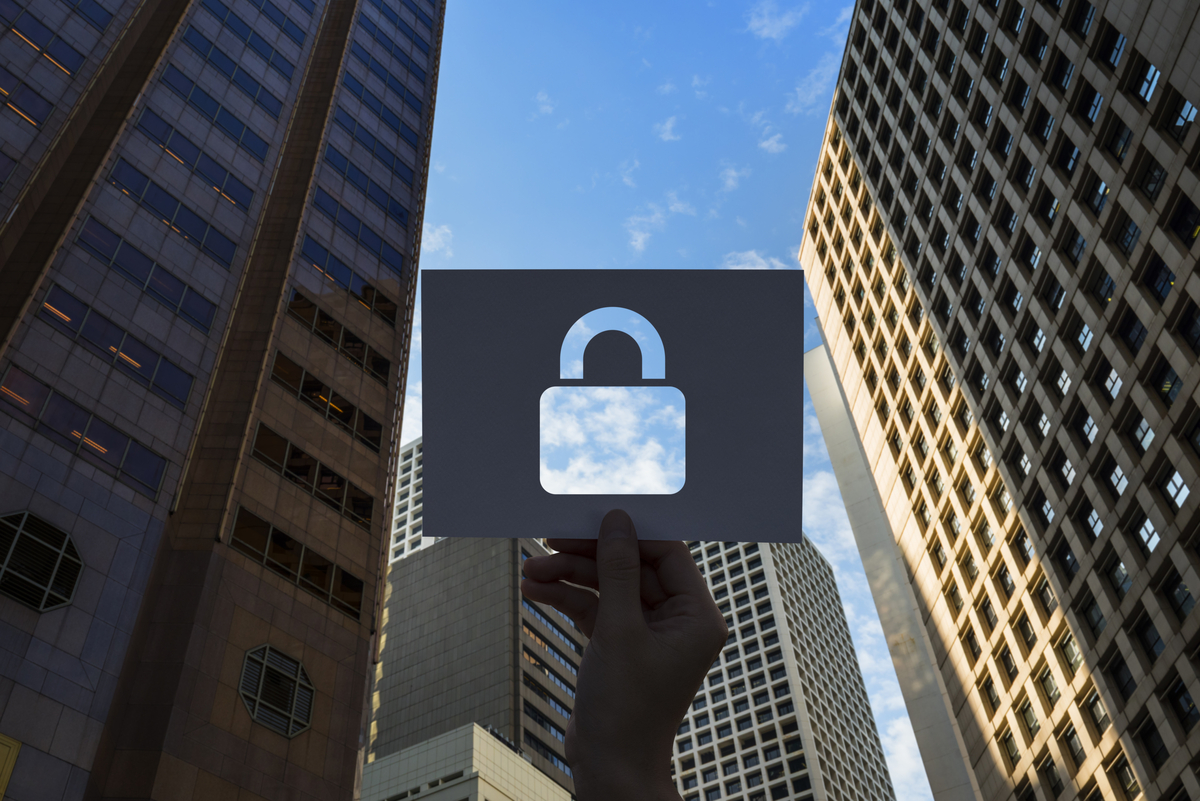
However, security teams must reconsider the “temporary” arrangements and take the necessary steps to update security policies, procedures, and technology as more and more firms adopt long-term or permanent work-from-anywhere policies. Implementing security controls, keeping an eye on security events, and proving compliance with security criteria will most likely provide difficulties.
Recalibrating your cybersecurity in construction methods for remote work involves one final step: make sure your security team members can engage and communicate with other technological and business teams, as well as function well together in this new setting. This takes time.
Trend 2: Automation
For years, security teams have been in a losing situation. They are unable to fend off every attack that their vast and intricate network of computer resources encounters. There is an increasing need for cybersecurity in construction specialists, and companies must acknowledge that there won’t be a quick fix.
Organizations need to rely more on automation rather than trying to compensate for gaps in tools and technologies by adding more human resources. Artificial intelligence and machine learning-powered cybersecurity in construction systems that continuously analyze data from security events they monitor are far more adept at spotting new dangers than human analysts. They can identify minor patterns of harmful conduct that are invisible to humans.
In a similar vein, security automation can constantly detect the existence of fresh software vulnerabilities, configuration mistakes, and other issues and guarantee that each is promptly fixed.
Enhancing automation and raising the caliber of automation technologies lessen the daily workload for the limited amount of cybersecurity in construction specialists. After that, these specialists can devote more of their time to strategic issues that could ultimately prove to be very advantageous to the company.
Trend 3: Adopting Zero-Trust Principles
An old idea, renamed “zero trust,” is to never presume that anything or anyone is trustworthy. Before giving access to any device, user, service, or other entity, confirm its reliability. Then, while the entity is using the access, confirm its reliability regularly to make sure it hasn’t been compromised. Just provide each entity with the resources it requires to reduce the consequences of any betrayal of trust. Zero-trust guidelines have the potential to lower both the frequency and seriousness of occurrences concerning cybersecurity in construction.
Zero trust is not a security measure or technology; rather, it is a concept. It depends on the entire technological infrastructure being built to regularly verify each entity’s identity and security posture as well as keep an eye on all of their operations. System and network administrators, software developers, security architects, engineers, and other tech experts must work together extensively to accomplish this. Since the implementation is nearly always a multiyear, phased process, there is growing demand to begin implementing zero-trust principles as soon as practicable. This is the one occasion to give in to peer pressure.
Trend 4: Improving Response Capabilities
The necessity for most cybersecurity in construction firms to enhance their response skills has become glaringly evident. Ransomware attacks against businesses have grown to be a legitimate industry. The attackers essentially lock users out of company systems and data and then demand and get hefty ransoms in exchange for restoring access. These attackers are simultaneously carrying out massive data breaches, gathering vast quantities of private information, and requesting ransoms to keep it from being sold or released.
To ensure a smooth and timely restoration of services, organizations must be equipped to handle significant ransomware incidents. This requires incident responders to collaborate closely with security experts, system administrators, legal counsel, public affairs, and other relevant parties. Anticipate ransomware demands and be ready to respond to them.
Trend 5: Recognizing the Risks from Supply Chains
Generally, we believe what our suppliers and service providers tell us. The event involving SolarWinds demonstrated the extreme danger associated with our supply chains. A nation-state can effectively infiltrate a single business, and that business might supply thousands of other businesses with compromised technology goods or services. These businesses will then not only get compromised themselves but also run the risk of giving their clients’ data to the initial attackers or offering their clients compromised services. Millions of individuals and organizations may become compromised from what began with a single firm that was compromised.
Addressing this is not a simple task. We need to make numerous improvements to both our technology and security plan. Right now, enterprises must identify the risks associated with our supply chains and insist that we all perform better. Individual organizations can bring attention to these issues and put pressure on vendors and service providers to improve, whether that means holding vendors responsible for subpar security practices that result in compromises, demanding greater transparency into vendors’ security practices before renewing contracts, or adding requirements to new procurements.

Conclusion
Cybersecurity in construction is a critical priority in the current digital era. Several cyber threats put construction organizations in danger. Construction companies can safeguard sensitive information, uphold their good name, and avoid possible financial losses by realizing the significance of cybersecurity and putting appropriate safeguards in place. This post will walk you through several actions you can take to strengthen cybersecurity in construction.
The growing dependence on digital technology, along with the broad availability of digital networks and data systems to employees and subcontractors, presents numerous avenues for astute hackers to launch attacks.
Damaged intellectual property theft, private data breaches, supply chain disruption, ransomware, spyware, and malware are all possible outcomes of a successful cyberattack. For a construction company, cyberattacks can result in disarray, uncertainty, and long-term financial losses.
Construction companies can be proactive in taking preventive measures to safeguard themselves against cyberattacks before they do significant harm to the organization. Smart steps to take to safeguard your company from the all too likely occurrence of a cyberattack include adhering to government-issued cybersecurity in construction regulations, enacting zero trust policies, educating and training staff, creating and testing an incident response plan, vetting company software, getting cyber insurance, and including cybersecurity in construction contracts.
Suggested articles for reading:
9 Tips to Improve Security in Construction Site
Digital twin technology in construction & Building; Guide to 2024
Big Data in Construction; Guide to 2024
Resources:
Maynardnexsen | Ideagen | ISA | Frontiersin | Equipmentworld | AON | NorthOne | ConstructionDive | CSEmag | Software Testing Help | World Construction Network | Resmo | Pbctoday | ENR | TechTarget
For the pictures: Freepik

